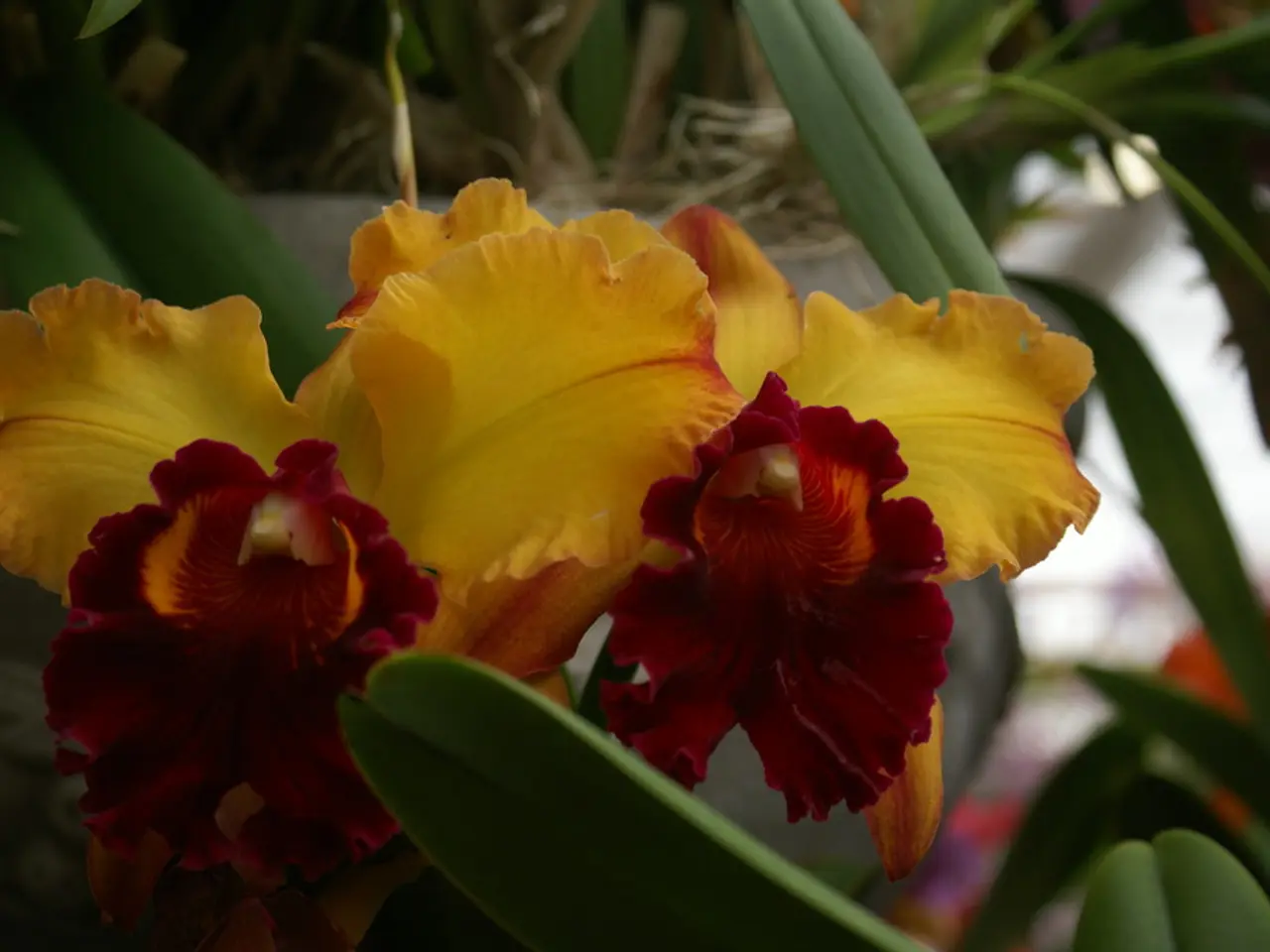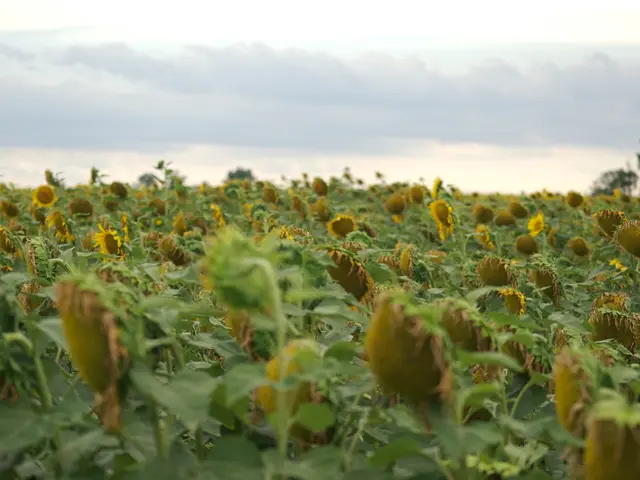Expert-Recommended Vegetation Choices for the Year 2025
Top Plant Picks for 2025: Brightening Gardens and Attracting Pollinators
Gardening enthusiasts are buzzing with excitement about the top plant picks for 2025, as experts predict a focus on sustainability, nectar-rich perennials, and shrubs that attract bees, butterflies, hummingbirds, and other pollinators. Here's a roundup of some of the most popular and hardy options for creating a beautiful and thriving pollinator garden.
Marigolds
Marigolds, with their vibrant colors and long blooming season, are a gardener's delight. These easy-to-plant flowers are tolerant of different soils and environments, and they have an added bonus: they repel pests like mosquitos. For maximum effectiveness, it's recommended to plant marigolds away from other flowering species and closer to high-traffic areas like doors and patios.
Marjoram
Marjoram, an easy-to-maintain herb, is another great addition to gardens. This fast-growing plant can be used in many dishes, including fish and chicken, and in tea. Marjoram does particularly well in clay pots and planter boxes.
Yellow Corydalis
Yellow corydalis are low maintenance and have a long bloom cycle, making them suitable for areas under trees and near patios. These plants can be prolific and should be cut off if spread is not desired.
Anise Hyssop (Agastache)
Highly favored for its tall lavender, purple, pink, or orange flower spikes that bloom mid-summer to frost, anise hyssop is a nectar-rich plant that attracts many pollinators, including bees and hummingbirds. It's drought-tolerant, sun-loving, and deer/rabbit resistant.
Autumn Sage (Salvia greggii)
Autumn sage blooms from spring until deep frost with tubular flowers in red, pink, purple, and white that hummingbirds love. It's a low-water, sun-loving woody shrub that can be rejuvenated with light pruning for more blooms.
Gaillardia (Blanket Flower, Gaillardia grandiflora)
A native plant with cheerful red, orange, and yellow daisy-like flowers, gaillardia thrives in poor soil and full sun, blooming continuously without deadheading. It attracts bees and butterflies.
Cleome
Cleome is a tall, self-seeding perennial with airy blooms that reliably reseeds itself and attracts many pollinators. Low-maintenance and tolerant, it's a gardener's favorite.
Autumn Joy Sedum
Autumn joy sedum is a late summer bloomer prized for its resilience to heat and drought, with dusty rose flowers that are bee magnets and provide late-season bloom color.
Black and Blue Salvia
Producing striking deep blue flowers loved by hummingbirds, black and blue salvia offers both color and high pollinator value.
Black-eyed Susan (Rudbeckia hirta)
A native classic that delights bees and butterflies well into fall, black-eyed Susan is suitable for late summer blooms.
Blazing Star (Liatris species)
Native perennials with tall flower spikes rich in nectar, blazing star attracts bees, butterflies, and hummingbirds in late summer and early fall.
Coneflowers
Coneflowers require at least 6 hours of direct sun, but afternoon shade is recommended in gardening zones 8 or higher. This common native plant throughout most of the US is expected to be popular in 2025 due to its native status and sustainability.
Dahlias
Dahlias, a popular flower in 2025, come in various colors and are suitable for bold gardens. They require at least 6 hours of direct sun and moist, well-draining soil.
Lavender
Hardy, drought-tolerant, and attractive to pollinators, lavender thrives in at least 6 hours of direct sun per day and well-draining soil.
Sunflowers
Easy to grow in most regions, sunflowers reach heights between 4 and 15 feet. They are favored by pollinators and can be used for roasting seeds as a vegan protein alternative.
Creeping Thyme
Considered fire-resistant, creeping thyme is a good choice for landscaping to protect homes from wildfires. It's a low-maintenance ground cover plant with beautiful blooms that attract pollinators.
Notable Mentions
- Allowing cilantro to flower provides pretty umbrella-shaped flowers that attract bees and butterflies.
- Lamb's Ear supports hummingbird moths.
- Various Salvia cultivars like 'Mystical Blue' and 'Pink Profusion' for long blooming and pollinator support.
- Aromatic aster for late-season pollinator activity.
The Royal Horticultural Society (RHS) has released an expanded, evidence-based 2025 list of over 10,000 pollinator-friendly plants selected scientifically to support a wide range of pollinators year-round, emphasizing the importance of plant diversity and continuous bloom periods.
With these top plant picks for 2025, gardeners can create visually stunning, pollinator-attracting gardens that provide continuous nectar and pollen supplies through the growing seasons, are often drought-tolerant, and come in a variety of colors and heights. For best results, experts recommend planting a mix of these species to cover early, mid, and late season to sustain pollinators throughout the year.
- Marigolds, with their vibrant colors and long blooming season, are predicted to be popular in 2025 for their sustainability benefits and ability to repel pests.
- Marjoram, an easy-to-maintain herb, is another recommended plant for gardens in 2025 due to its versatility in cooking and growing in various conditions.
- Yellow corydalis, known for their low maintenance and long bloom cycle, are suitable choices for creating eco-friendly landscaping in gardens for 2025.
- Anise hyssop, a nectar-rich plant that attracts many pollinators, is a popular pick for home-and-garden enthusiasts following gardening trends in 2025.
- Autumn sage, which blooms from spring until deep frost, is a woody shrub that is low-water, sun-loving, and expected to be a favorite among sustainability-focused gardeners in 2025.
- Gaillardia, a native plant with cheerful flowers that attract bees and butterflies, is considered a must-have for pollinator gardens in 2025 due to its resilience to poor soil and full sun.
- Creeping thyme, known for its beauty, low maintenance, and attractiveness to pollinators, is a recommended choice for gardeners seeking to add fire-resistant landscaping to their properties in 2025.





